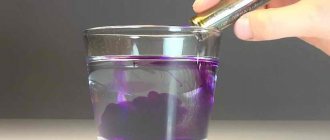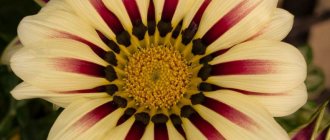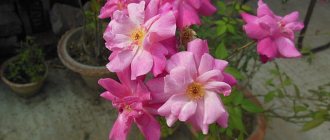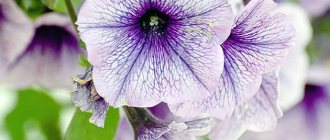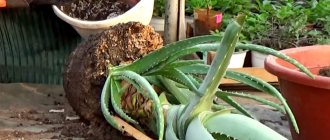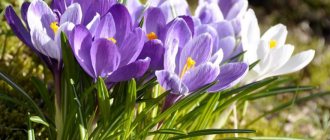Lavender is a perennial shrub that has become famous for its delicate aroma of essential oil, which has a relaxing effect and medicinal properties. In addition, the smell of the plant is not tolerated by moths and mosquitoes. Thus, dried flowers are used in everyday life to fill sachets for the wardrobe and protect the room from the penetration of blood-sucking insects.
The plant's homeland is the Mediterranean, and therefore lavender is very heat-loving and somewhat picky about environmental conditions. To grow a bush on a windowsill, the gardener will need to make some efforts to create a favorable atmosphere, but it is worth it for the delicate flower to become a decoration of the home interior.
Can it be grown?
Due to the fact that lavender is a heat-loving shrub, it is possible to grow it at home in a pot, but provided that the plant receives enough sunlight and water, and the room is warm and there are no drafts.
This is what lavender looks like and blooms in a pot:
Suitable species and varieties
Not all varieties of lavender are suitable for planting at home. The culture must be heat-loving in order to feel comfortable at room temperature.
There are more than 30 types of lavender, but the most popular are three varieties :
- narrow-leaved (English);
- broadleaf (French);
- hybrid (Dutch).
The first two types are most suitable for planting in a pot. They usually bloom from May (June) to August.
The most suitable crops for growing at home are the following varieties:
- Sweet;
- Munstead;
- Dwarf Blue;
- Peter Pan;
- Silver Blue;
- Sharon Roberts;
- Lavender Lady.
If you follow the growing rules, these varieties adapt perfectly to indoor conditions , delighting their owners with beautiful flowering and delicate aroma.
What kind of lavender can be grown indoors?
Among the wide variety of lavender family, there are two most common species that can be successfully grown indoors.
Lavender angustifolia or English
It has long narrow leaves, which is why it got its name. The bright purple inflorescences of English lavender are collected in dense, elongated spikelets. The plant is quite compact and looks impressive in pots. In addition, narrow-leaved lavender has a wide selection of different varieties in different colors. So contemplating a fragrant rainbow on your windowsill all year round is a completely feasible dream.
Unpretentious to the conditions of detention, frost-resistant, it is most suitable for home cultivation for those gardeners who do not have much practical experience in growing lavender.
Broadleaf or French lavender
Another member of the lavender family has large, unusually shaped leaves. But that’s not what attracts people’s attention. This type of lavender is distinguished by large flowers, which are collected in large inflorescences. When this plant blooms, the flowers appear to float above the leaves. For such an unusual appearance, this flower was called butterfly lavender. Unlike English lavender, butterfly lavender does not have such a pronounced aroma, but its flowers look quite exotic.
French lavender is a rather whimsical plant. Those who decide to grow this capricious plant on windowsills should understand that it is very demanding on soil composition and moisture. But it places special demands on the thermal regime. This species cannot tolerate even the slightest deviation from the usual temperature, and frost can completely destroy this wonderful flower.
Dutch lavender
It is also a well-adapted variety of hybrid lavender for growing on a windowsill. It is distinguished by large spreading bushes with large flowers. The elongated thin leaves have a silvery color. Most varieties of this lavender have flowers of different colors, from soft blue to rich purple.
The necessary conditions
Growing live lavender at home is not an entirely simple task, since you need to comply with a number of requirements for the plant to feel comfortable, actively develop and bloom.
The soil
To begin with, the crop must be provided with suitable soil .
In nature, lavender grows on alkaline soils with a predominance of sand. Therefore, it is necessary to add coarse river sand to the soil mixture for the pot.
In general, the plant requires loose, light, alkaline and breathable soil . Acidic soil is not suitable for growing. You can buy the finished mixture in the store, or you can prepare it yourself from:
- sand;
- humus;
- turf or leaf soil.
All components will need to be mixed in a ratio of 1:1:2 . Before a crop is planted or sown in the soil, it will need to be sifted to remove debris and large lumps, and then disinfected with potassium permanganate.
To make the soil loose and breathable, you should add a little fine crushed stone to it.
Potty
One of the important attributes for growing lavender at home is a pot.
It should be wide and deep enough, since the plant has a deeply penetrating, tap root system that needs space to develop.
The minimum depth of the container should be 12-14 cm , the minimum diameter should be 30 cm, and the volume should be at least 2 liters. The pots can be any shape (rectangular, square or round).
It is advisable that the container be made of ceramic or clay.
If the container is selected for sowing seeds, then it must have sides at least 7 cm high . In the future, the lavender will need to be replanted and you will need to take a container approximately 7 cm larger in size.
The larger and more spacious the pot, the more opportunity the plant has to grow and develop.
To grow lavender outdoors, you need to select pots made from weather-resistant materials. For example, containers made from :
- ceramics;
- concrete;
- clay;
- gypsum
If metal flowerpots are used, they must be enameled or stainless. Wooden containers must have a waterproof coating.
In what places does it grow?
Lavender in a pot can be grown in three places:
on the windowsill;- on the balcony (loggia);
- on the street.
If the plant will grow indoors, then you should choose windows located on the south or southwest side - in this case, the crop will receive enough light and heat.
But in winter, lavender bushes, even on a southern windowsill, will lack sunlight , so at this time they will need additional illumination with a fluorescent or phyto lamp.
The bush should be in the light:
- in winter about 7 hours a day;
- in summer - at least 12 hours.
also important to regularly ventilate the room so that the plant receives a sufficient amount of oxygen , but this should not create a draft.
As for temperature, these indicators are different for each variety. But, as a rule, lavender does not tolerate temperature drops from +5 ̊C. During active growth and development, especially in summer, it prefers moderate temperatures from +18 to + 20 ̊C. She doesn't like heat. To ensure optimal performance in summer, it is worth humidifying the air in the room or taking the plant out into the fresh air.
As a rule, the plant is taken out to the balcony or street in the summer . At the first return frost, it is better to bring it into the house or leave it on a glazed balcony (loggia), covering the bush with spruce branches.
When growing potted lavender outdoors, it is also important to choose a sunny and warm place, since the crop does not grow well in the shade.
Nuances of caring for adult plants
Lavender growing in pots is a demanding plant. To avoid the loss of decorative qualities of this crop, you will have to take care of creating certain conditions:
- Light. The best place for lavender is a window facing south or east. The plant can tolerate dry indoor air, but not poor lighting.
- Temperature. The optimal indicator for spring is +18 -20°C. In extreme heat, it is important not to forget about ventilation, but in winter the plant should be placed in a cool room, away from heating devices.
- Watering. Seedlings are watered every day, and older plants as the soil dries out.
- Fertilizers. When replanting crops annually, fertilizing is applied in a minimal amount. If the plant begins to slow down its growth, and its decorative qualities leave much to be desired, then fertilizing is applied once every 14 days. You can use universal mineral fertilizers suitable for indoor plants.
Which planting method is better to choose?
There are several ways to plant lavender:
- seeds;
- cuttings;
- layering;
- seedlings.
Each of these methods has its own characteristics, pros and cons.
Cuttings
The essence of this method is to separate shoots from an already mature bush and make cuttings from them, which will later be planted in the ground. To implement this planting technology it is necessary :
- Cut annual shoots from an adult bush.
- Divide them into small pieces, 10 cm long.
- Cut off the lower part (it will take root) at an angle of 45 degrees and treat it with a root formation stimulator.
- Plant the cuttings in a mixture of sand and peat (1:1 ratio), cover with film and leave until rooted.
- After the roots appear, prepare containers: take pots (preferably clay), with a diameter of 25-30 cm, and place drainage on their bottom (nut shells, sawdust, small shards or pebbles are suitable).
- Prepare the soil: mix leaf soil, humus and sand with a small amount of lime in a ratio of 3:2:1.
- Pour the soil mixture into the pots.
- Plant rooted cuttings.
The advantage of this method is:
- its simplicity;
- no need for special knowledge or experience;
- seedling survival rate and flowering rate (the next year after planting).
However, the disadvantage of this method is that to obtain a cutting you need an adult plant.
Seeds
To grow lavender this way, you will need:
container for sowing;- pots for replanting;
- lavender seeds;
- mulch;
- drainage;
- spray.
To begin with, the seeds must be stratified to increase seed germination. They are usually stratified in the refrigerator. To do this you need :
- Take non-woven napkins or cotton pads.
- Place the disk (or napkin) on the bottom of a container with a lid.
- Sprinkle the seeds onto it, covering with a second disk.
- Add a little water and drain off excess liquid.
- Leave the container for 2-3 days in a warm place for the seeds to swell, and then put it in the refrigerator.
The first shoots will appear in about a month. They can be planted when about a quarter of all seeds have sprouted. To do this, you need to prepare containers and soil, and then start sowing seeds :
- The container must be filled with soil mixture and leveled.
- Moisten the soil with a spray bottle.
- Plant the seeds to a depth of approximately 3 mm, at a distance of 1.5-2 cm from each other.
- Lightly sprinkle with soil.
- Cover the container with a lid or film.
- Place the container in a well-lit, warm place.
Seedlings need to be provided with light moisture by periodically spraying the soil . If all conditions are met, the first shoots will appear in a couple of weeks. In this case, the film will need to be removed and the containers moved to the brightest place.
When the seedlings have 3-4 true leaves, they will need to be picked.
Plants must be replanted very carefully so as not to damage the root system.
The advantage of this method is the ability to grow a plant from the very beginning, knowing exactly its variety, how the seedlings were grown and how they were treated (when purchasing ready-made planting material, there is no such certainty). However, this is the most labor-intensive and time-consuming method (you will have to wait 2 years before the first flowering) of growing lavender, the end result of which will not always be successful.
Seedlings
Typically, this method is used if the lavender was purchased in a store ready-made, that is, in the form of seedlings.
Also, the technology of planting seedlings in this way is suitable if the lavender was grown from seeds. As a rule, such bushes are small in size, so you must first select small pots for them , 3-4 cm larger than the earthen ball.
To plant lavender using this method, you need:
- Pour drainage (gravel or expanded clay) into the bottom of the selected container, carefully placing it so as to leave the holes open. Then the watering water will not accumulate in the pot, and there will be air from below.
- Pour soil into the container.
- Make a hole and water it.
- Plant the bush in the hole and sprinkle it with soil mixture.
- Water with growth stimulator Zircon.
This method is distinguished by its simplicity (especially if the seedlings were purchased and not grown independently) and quick results (the plant will soon take root and will delight in flowering).
By layering
Cuttings are the outermost shoots of a lavender bush that were intentionally rooted into the ground. The planting technology in this way is as follows :
- In March or April, the shoot must be bent to the ground and secured with a wooden or metal slingshot.
- Sprinkle the area in contact with the ground and moisten.
- At this time, roots begin to form on the layering. The rooted area is separated from the mother bush after about 2 months.
The advantage of this method is reliability, low labor intensity and good results.
The simplest planting methods are to grow lavender using cuttings or seedlings (if it was purchased in a store) - they do not require special knowledge, time and effort, but you can get the first flowers the next year.
Features and description of the plant
Lavender is 47 species of perennial plants of the genus Lavender of the Lamiaceae family. People have developed several hybrids of the bush, and 47 natural varieties grow in Europe, India, Australia, northern and eastern Africa, the Canary Islands and the Arabian Peninsula. The plant has taken root on mountain slopes and plains: in temperate, subtropical and tropical climates. Easily tolerates exposure to scorching sun and lack of moisture. Mostly cultivated varieties are grown in gardens. During the ripening period, the bushes are covered with flowers of violet, purple and lilac shades. Lavender is used to improve the smell of clothes, and one of the leading chains of dry cleaners and laundries was even named after this flower. The plant is also used in perfumery, also due to its aromatic properties. The leaves and flowers are used to make tea, and in some European countries, ice cream.
Known species:
- lavender angustifolia;
- toothed;
- stehadskaya.
Transfer
Lavender requires systematic transplanting from one pot to another - in this case, the root system will fully grow and not rest against the bottom of the container.
When should it be carried out?
It is recommended to carry out the procedure every year until active growth begins.
However, the option of replanting is possible at any time (even during the flowering period) , if the crop is provided with proper care, high air humidity and moderate temperature.
Transplantation is necessary to rejuvenate the plant and increase its growth rate.
You can understand that lavender needs to be planted in a larger pot by the appearance of the bush - a large number of new shoots can be seen near the edge of the container, and the lavender has slowed down its development and growth.
What kind of soil and container is needed?
When replanting a bush, choosing a suitable pot, you need to start from the size of the root system . The new container should be 5-7 cm larger than the previous one, and the roots should not reach the walls of the container. This will allow the powerful lavender roots to develop normally.
The minimum diameter of the pot is 30 cm and the volume is 2 liters. The depth should be such that the rhizomes can develop freely until next year. The depth must be greater than the diameter of the container. Also, do not forget that lavender grows better not in plastic containers, but in natural ones (ceramic, clay). The holes for water in them should be either frequent or large.
As for the soil, the plant should still choose light, non-acidic alkaline soil. It is recommended to prepare your own soil mixture consisting of :
- universal flower soil;
- a small amount of lime or wood ash (1-2 tsp);
- sand;
- peat
Technology
To transplant lavender to a new place, you will need:
- Suitable size pot.
- Drainage (expanded clay).
- Soil mixture.
- Growth stimulator Zircon (for watering after transplantation).
First you need to prepare the pot:
- Make drainage: pour expanded clay onto the bottom of the pot in a layer of 2-4 cm.
- Fill in some of the soil mixture and make a hole corresponding in size to the diameter and depth of the previous lavender pot.
Then the transplant itself is carried out, for this you need:
- Remove the lavender from the old pot. It will come out easier if you turn it upside down and spill the soil with water before doing so.
- Plant the bush in the prepared hole so that the surface of the soil of the previous pot is not covered with new soil.
- Sprinkle with prepared soil mixture.
At the end you need to water the planted bush, for this you will need:
- Dilute the growth stimulator Zircon (take 10 ml of the product per 5 liters of water at room temperature).
- It is good to spill the soil around the edges of the pot.
- When the water has drained, fill the voids that appear with soil and lightly compact them.
Varieties of pots
When does Lavender bloom?
Before you grow lavender at home yourself, you need to choose the right pot for it.
Flowerpots
A flowerpot is a decorative container in which a pot with a plant is placed. Advantages:
- Aesthetic appearance;
- The opportunity to immediately purchase a large pot that will accommodate grown lavender;
- There is no need to choose expensive pots that will be changed frequently.
Wooden planter
Vases
Flowerpots are decorative pots made of stone, plaster or metal that stand outdoors. There are vessels made of clay, ceramics or concrete. Flowerpots for planting lavender can be mobile, so that with the onset of cold weather they can be easily moved indoors.
Flowerpots on the street
Size
Lavender grows well in spacious pots, the diameter of which is at least 25-30 cm. The shrub grows quickly, so you can choose a container “for growth”. The height of the pot should be 5-6 cm greater than the length of the central root, the volume should be at least 2 liters.
Material
It is advisable to choose breathable materials such as clay, wood and ceramics. It is allowed to use metal and pots with a glossy surface with drainage holes.
Note! The pot must be light or medium in tone. Dark surfaces heat up faster and retain heat, which is unacceptable for lavender.
Price
The price depends on the material and size, also on the appearance of the pot and the amount of decor. Prices for flowerpots vary from 1 thousand rubles. up to 7-9 thousand rubles* and more. Flowerpots made of clay or ceramics will cost on average from 300 rubles. up to 4-5 thousand rubles*
*Prices are current as of July 2022.
Designer pots
Indoor flowers play a significant role in the interior design of an apartment; the pot for planting should be combined with the overall concept. In pursuit of unusual design solutions, we must not forget about functionality. Before purchasing, you need to pay attention to the following criteria:
- The material must be breathable or have holes for soil ventilation;
- The shape of the vessel should be elongated; low and wide pots should not be chosen;
- A prerequisite is the presence of drainage holes;
- A lavender pot should not be dark, even if this is a stylish design decision.
Unusual pot
To give preference to an ordinary pot or a designer one is everyone’s personal choice, but it must be taken into account that after a year the lavender will have to be transplanted to a new place.
Note! A more rational solution is to purchase a designer pot; in this case, the appearance of the pot does not matter.
Specialized (other types)
In addition to traditional flowerpots and flowerpots, there are a number of unusual containers for flowers, these include:
- Hanging pots and flowerpots are an alternative to conventional flowerpots that allow you to lift lavender bushes up;
- Illuminated flowerpots are a design solution for decorating gardens and verandas;
- Silicone flowerpots and pots are one of the latest solutions from designers. You can bend the edges of such a flowerpot, bend them back as the flower grows and increase its volume;
- Florariums are vessels made of transparent glass. Only light-loving plants that are resistant to dry weather can grow in them;
- One of the latest developments is smart pots with an automatic watering system. The development is relevant for plants that require regular moisture.
Rules of care
In order for lavender to grow, develop and bloom well, it is necessary to provide it with the following care:
Loosening the soil . To ensure aeration, it is necessary to loosen the soil weekly.- Watering. Water the plant with soft, settled water. In the first couple of months after planting, watering is carried out 2-3 times a week, after which moisture is carried out as the soil dries.
Any water that has leaked out of the drainage holes must be removed immediately to prevent it from being absorbed back. To retain moisture longer, it is worth covering the soil surface with a layer of mulch made from sawdust or pine needles.
- Feeding . To improve the growth of green mass of bushes, it is necessary to apply nitrogen fertilizers twice a year. Also, during the flowering period, complex fertilizing is applied.
- Trimming . It is necessary not only for maintaining the decorative appearance of lavender, but also for better growth of healthy, young shoots. For this purpose, it is necessary to trim damaged and dry branches. The first procedure is carried out immediately after flowering has completed (the top of the bush needs to be slightly trimmed), the second - at the end of autumn (the shoots should be shortened by 1/3 and the bush should be slightly thinned, leaving a few green stems).
- Lighting . Lavender needs a lot of sunlight - for this reason it should be placed in a south or south-east window. If there is not enough natural light, it must be compensated by artificial lighting with a fluorescent lamp.
Growing lavender at home
Lavender is usually planted at home in two ways: through seeds and rooted cuttings. No expert can say which method is better, since each gardener has his own secrets and preferences.
Cuttings
The most convenient and frequently used method by most amateur gardeners is planting by cuttings. The planting technology is simple and does not require special skills.
Cuttings, 8-10 cm long, are cut from one-year-old shoots, after which they are buried in previously prepared and well-moistened soil. To create a greenhouse effect, the container with cuttings is covered with polyethylene and placed on the windowsill. Usually this is enough. Cuttings take root very quickly. After the cuttings have taken root (3-5 days), they are planted in separate pots for permanent residence.
Seed planting method
This is a more complex and time-consuming method that requires certain rules to be followed.
- Lavender seeds germinate rather poorly and unevenly. The first shoots appear 30-50 days after sowing. At this time, it is very important to maintain optimal moisture-thermal conditions. The soil in the container where the seeds were sown must be constantly moistened, and the container itself must be covered with a plastic bag.
- Mandatory stratification. This is a unique way of hardening seeds. After planting, the seeds are kept in a cool place for at least 5-6 weeks. This will allow you to get healthy seed germination. For stratification, the bottom shelf of the refrigerator is often used.
- Do not allow the soil to become waterlogged. To do this, drainage must be placed at the bottom of the container. This could be eggshells, small pebbles or nutshells. The substrate for sowing seeds is prepared according to the same principle as for planting cuttings.
- For seed germination, it is necessary to maintain a constant temperature, optimal for the plant – 18-20°C. It is better to place containers on window sills on the east or south side.
- There should be enough lighting, especially during plant growth. Under no circumstances should the plant be allowed to grow in partial shade. This will lead to deformation of the main trunk. Such plants will not be able to fully develop and will be stunted.
- When the seedlings grow to 5 centimeters, they can be planted into separate containers. Lavender grown from seeds begins to bloom no earlier than a year later.
Propagation of lavender by dividing an adult bush
As an alternative method, you can grow the plant by dividing the mother bush. It can be either a bush growing in open ground or a bush of an indoor plant.
If planting material must be taken from a bush in open ground, then preliminary preparation is needed. In the fall, such a bush is pruned so that cuttings no more than 10 cm high remain on the surface, which are covered with earth for the winter. In the spring, this bush is sprinkled again, creating an earthen cushion. This provokes the mother bush to produce shoots that can be planted in the fall.
With the indoor version of lavender, the situation is simpler. During the plant's dormant period (September-October, April), the plant is planted according to the principle of indoor flowers. The bush is removed from the ground and carefully divided into individual plants, which are then planted in separate pots.
Helpful information
Daria Vorontsova
Amateur gardener. He is interested in growing various greens at home.
Florist experts note that with this method of planting, lavender blooms earlier than with all others.
How to feed lavender
A natural feature of lavender is that it tolerates poor soils well, and this is an advantage. When kept indoors, this flower can easily do without fertilizing if it is replanted annually.
When growing lavender as an interior flower, it is important to preserve its lush bloom. In this case, fertilizing is applied every two weeks.
Lavender is loyal to any fertilizer. But their composition depends on the growth phase. For example, in early spring it is necessary to apply nitrogen fertilizers; during the flowering period, it is necessary to support the plant with potassium and phosphorus. But in order not to make a mistake with the dosage, it is better to seek help from a specialist.
Secrets of proper pruning of lavender
Lavender is usually pruned twice a year: after flowering and in early spring. This also has its own characteristics.
Woody parts of any species of narrow-leaved lavender cannot be trimmed. Pruning is carried out above the growth zone by 2 nodes.
The main pruning of bushes is carried out after flowering. It is needed for the active formation of bushes and plant growth.
During this pruning, dead parts of the plant are removed, the greenery is lightly trimmed, and the tops are trimmed.
The second time lavender is pruned is in early spring. This time, shoots are left no higher than a third of the original height, excess shoots are removed and the plant is thinned out.
During the growing season, the bush is constantly cleaned, removing dry stems and leaves. In general, lavender tolerates pruning well.
Despite regular pruning, lavender tends to age, and this has a bad effect on the intensity of its flowering. Therefore, bushes need to be replaced every five years.
How to protect a flower from pests and diseases?
As a rule, at home, lavender is less susceptible to various diseases and pest invasions. She usually suffers from improper care. However, there are still some diseases and insects that can harm lavender bushes:
- Gray rot . It has the appearance of a white fluffy coating that appears on the shoots. Over time, small pockets grow and turn into gray-blue mold - during this period the death of the plant begins. At the initial stage of disease development, it will be necessary to spray the crop with copper sulfate or Hom. In later stages, medications will not help much.
- Powdery mildew . It appears as a white coating, which over time becomes covered with white droplets. With the formation of spores, the spots turn brown, and then a coating appears on the shoots and buds. To combat the disease at the initial stage, it is necessary to provide the lavender with better lighting and avoid waterlogging of the soil. Among the drugs that will help are Fitosporin, Baktofit, Alirin.
- Spider mite . They enter the house through an open window or shoes. A sign of their appearance is a light cobweb on the shoots. To get rid of mites, you need to treat the plant with Fitoverm.
In order to prevent the occurrence of diseases, it is necessary to ensure that the plant receives enough sunlight and that the soil is not over-moistened (or over-dried). It is recommended to fertilize to maintain and strengthen the immunity of lavender.
How to prepare the soil?
This culture needs light, loose, breathable soil. Acidic soil is not suitable for lavender.
The easiest way is to purchase the mixture in a specialized store, however, you can also prepare the substrate yourself: - sand - 1 part; - humus - 2 parts; - garden soil - 3 parts.
After all the components are mixed, the soil is sifted to get rid of large lumps and debris, and then disinfected with a solution of potassium permanganate.
Possible difficulties
In general, growing lavender bushes at home is not difficult or problematic . However, there are some nuances that you should know about before planting a plant in your home.
At home
The main difficulty in growing lavender at home is that it is a “wild” plant that is not sufficiently adapted to growth and development in the limited space of a pot. Other difficulties and nuances are:
Always provide the plant with a spacious container - since lavender has a long central root, which should not rest against the bottom of the pot (otherwise it will stop growing).
Therefore, it is necessary to transplant it annually into deeper and freer containers.At the same time, the plant itself does not like to be constantly disturbed, so it tolerates transplants with difficulty. To reduce stress levels, the procedure must be carried out very carefully and during the bush’s dormant period.
- The need to provide the crop with an influx of fresh air - if the room is not ventilated regularly, it will begin to “suffocate” and stop growing.
- The need to monitor the maintenance of optimal humidity levels, since lavender does not tolerate waterlogging. It also does not respond well to soil drying out.
- Providing the required amount of light - in winter and cloudy days it is necessary to install additional lighting for the crop with a fluorescent lamp.
On the balcony and on the street
If the plant is exposed to fresh air in summer and spring (whether on a balcony or street), it is important that the lavender is not in the shade. Otherwise, its cultivation will become practically useless: the bush will develop poorly and will not bloom.
The main difficulty lies in wintering the crop . You should not leave the plant on open balconies (or in the garden) in frosty winters - there is a high probability that it will die. At +5 ̊C, lavender goes into a dormant state, so it is worth bringing it into the house at this time. Another option for wintering is to leave the crop on a glazed and unheated balcony (or loggia).
As with growing in an apartment or open ground, lavender in a pot on a balcony or street requires timely pruning, which should not be forgotten.
Necessary items for growing lavender
If you decide to grow this crop in a pot, then it is worth considering that the plant will become more demanding.
Optimal growth and development is achieved through the following things:
- pot for transplanting;
- drainage;
- containers for sowing seeds;
- mulch;
- spray;
- seed material.
Advantages and disadvantages
The main advantages of growing lavender at home in a pot include:
Less susceptibility of the plant to various diseases and pests.- A pleasant aroma wafting throughout the house.
- Always have lavender at hand: for carrying out procedures or cutting branches (in a sachet, for taking a bath or creating a fragrant pad).
However, this option for growing lavender bushes also has a number of disadvantages:
- Easier to care for than when planted in open ground.
- Individual intolerance to the smell of lavender.
- The need for annual transplantation.
User reviews
The generalized pros and cons of growing were presented above, while gardeners on forums share more specific advantages and disadvantages of planting lavender at home.
So, they consider the advantages:
- Pleasant, calming aroma (if you place lavender in the bedroom, it helps improve sleep).
- Decorativeness of the bush.
- A wide range of uses: in cooking (as an additive to tea), in folk medicine (essential oil helps relieve pain from a burn, accelerates healing), in everyday life (put cut dried twigs in a closet to ward off moths).
And gardeners consider it a disadvantage:
- Difficult to grow from seeds.
- The need to ensure optimal conditions of detention (if any point is not met, the lavender dies).
The opinions of flower growers can be found here, here, on this forum, on the website and this resource.
Subtleties of fertilizing and watering
Caring for lavender in open ground involves several activities that will have to be carried out alternately throughout the growing season. Plants need to be fed regularly. It is better to use fertilizers with a high potassium content and low nitrogen content for this purpose. It is not worth using manure to enrich the soil: an excess of nitrogen in the soil can lead to the fact that lavender bushes will actively branch, delighting with thick, juicy greenery, but form few buds.
Moderation should be observed when it comes to watering. The plant does not like excess moisture, but it also does not tolerate a lack of it well, responding to it with sparse flowering. You should start watering lavender in the garden only when the top layer of soil in the garden bed has dried well.
High hilling and mulching of the beds will help retain the moisture the plants need in the soil, as well as increase its porosity. Both procedures are carried out regularly - in spring and autumn. They also increase the decorative quality of lavender bushes, influencing the formation of young shoots on their trunks. Rotten leaves are well suited for mulching. You can also purchase special multi-colored substrates in the store that will make your beds even more attractive. The procedure will require attention. To prevent the flower from rotting, the soil at the base of its trunk is left uncovered.
Caring for a plant in open ground involves systematic pruning. It increases the lifespan of lavender bushes. It is carried out twice: after flowering and towards the end of the growing season. When the buds of the plant wither, it is enough to shorten the stems on which they were located by 1-2 cm. Autumn care is more intensive; it involves removing most of the old shoots from the bush. No more than 4-5 young stems are left on it.
How to water lavender
Lavender at home does not like heavy watering; it must be moistened several times a week in the summer. During the plant's dormant period and in winter, watering is reduced to once every two weeks or less, it is done as needed.
The water temperature should be room temperature and watering should be done either in the evening or early in the morning. It is very important to spray the plant regularly, especially in winter if the pot is located close to heating devices. It is even recommended to install air humidifiers nearby to prevent the soil from drying out.
The healing properties of lavender
This perennial plant contains a large amount of substances beneficial to the body that have a beneficial effect on humans. In addition, the lilac flower helps to get rid of many problems associated with the health of its owner. Considering that lavender can be grown at home, this flower acquires great value in the eyes of gardeners.
What are the benefits of lavender flowers?
Lavender flowers help cure the following ailments: • diseases associated with the cardiovascular and nervous systems of the body; • presence of nightmares; • insomnia; • inexplicable, obsessive fears; • diseases associated with the upper respiratory tract; • different types of cough (including allergic); • headaches caused by various reasons; • bloating and discomfort in the abdomen; • diseases of the female sphere; • hemorrhoids; • arthritis, etc.
Lavender should be used with caution during pregnancy, if you have any allergic reactions or have recently had surgery (including abortion).
Tools, devices and substances
To properly develop lavender in pots, you need to prepare in advance:
- stratified plant seeds;
- soil purchased or prepared independently;
- drainage layer (coarse sand can be used);
- containers for sowing;
- pots for replanting;
- mulch;
- spray.
in containers for sowing and planting to remove excess moisture . The soil must be treated with biofungicides. They will restore the natural microflora of the soil. Trichodermin or Fitosporin are useful for these purposes.
Popular types of lavender
This flower comes in many types of varieties. The most popular of them are the following: 1. Narrow-leaved. 2. French. 3. Hybrid.
The first type of plant grows best in cold areas, easily tolerating frost. It reaches a height of one meter. The second type comes to mind first when the question arises whether it is possible to grow lavender at home. It is convenient to keep it indoors, since the flower does not like the cold and does not rise above a meter in height. The third type is the most popular. It grows up to two meters in height.
Where to put lavender
Lavender in a pot is difficult to care for, it requires enough light, so many people are interested in the question: can lavender in a pot be placed on the balcony? Of course you can, especially in the summer season.
If you decide to leave the plant on the windowsill, it is recommended that the windows face east or south. Daylight hours for lavender should last at least 10 hours. If the weather is cloudy or daylight is short, then it is necessary to use a fluorescent or phytolamp.
No less important in home care is regular ventilation of the room and oxygen supply to the plant; it is important not to leave it in a draft.
Lavender does not tolerate sudden changes in temperature; the most favorable temperature for growth and flowering is 18-20 °C; it does not like heat.
Temperatures below 5-10 °C should also be avoided.
Step-by-step instruction
The algorithm for sowing lavender is as follows:
Prepare the container. To do this, you need to make a drainage hole in it and treat it with boiling water.
- Place a layer of perlite or coarse river sand at the bottom of the container. It also needs to be spilled with a solution of potassium permanganate before use for disinfection.
The sand will serve as drainage. The drainage layer must be at least 1 cm.
- Pour the soil mixture into the container, leaving 1-3 cm.
- Spray the surface with water at room temperature from a spray bottle. There is no need to over-moisten.
- Seeds need to be laid out one at a time, keeping a distance of 1.5-2 cm.
- Sprinkle the seeds on top with a small layer of soil.
- Sprinkle the surface with water again.
- Close the container with a lid. You can use film to create a greenhouse effect.
- The container should be placed in a warm place. The optimal temperature at this stage of cultivation should be around 18-20°C.
Important ! If you want to germinate several types of crops, then each container must be labeled with the name of the plant and the date of sowing.
You can plant plant seeds directly into a pot, bypassing the germination stage in a container. The sequence of actions does not change. Depth level – 2-3 cm.


